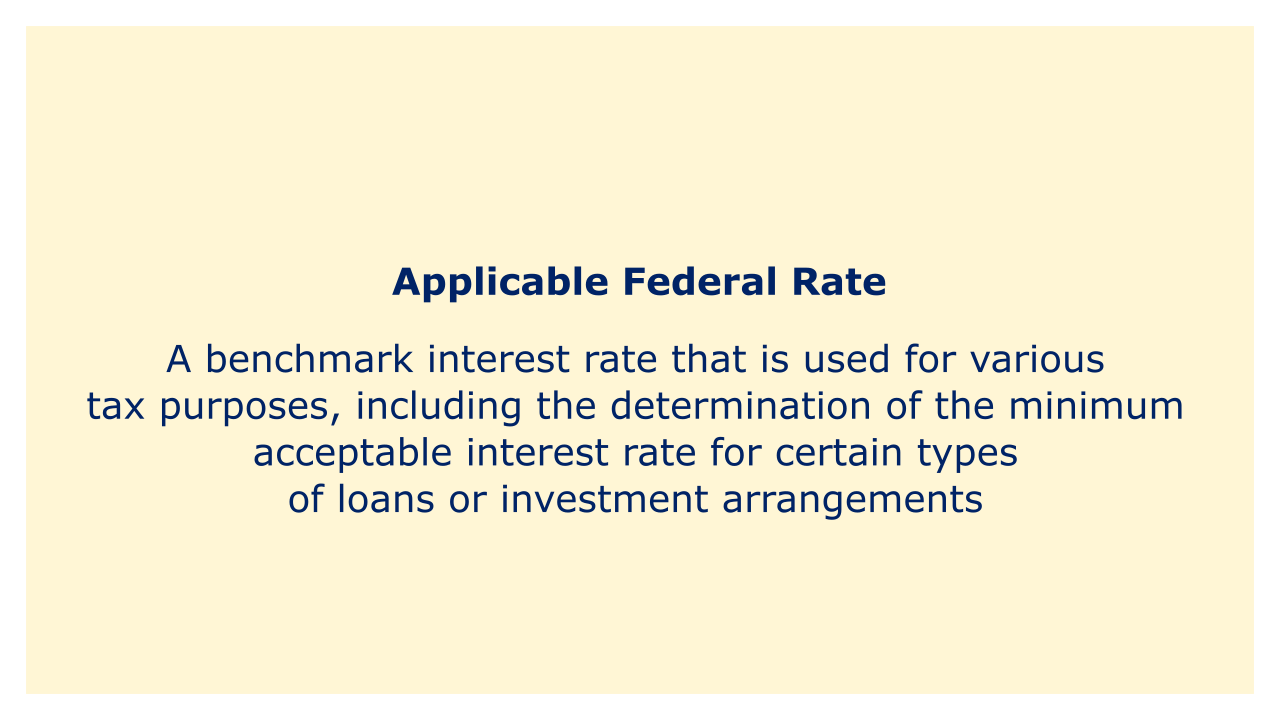 |
| Image: Moneybestpal.com |
A benchmark interest rate known as the Applicable Federal Rate (AFR) is utilized for many tax-related purposes, including figuring out the lowest allowable interest rate for specific loans or investment arrangements. The Internal Revenue Service (IRS) releases the AFR each month. It is based on the typical market rates for US Treasury securities with maturities of three, five, or 10 years.
The minimum interest rate that must be paid on an arm's length loan between individuals in order to prevent imputed interest income is determined using the AFR as a reference rate in numerous tax-related circumstances. This is significant because the IRS may consider a loan between individuals to be a gift and levy a gift tax on the difference between the loan amount and the imputed interest if the interest rate on the loan is lower than the AFR.
The minimum rate of return necessary for specific investment arrangements, such as below-market loans, charitable remainder trusts, and private foundations, is also determined using the AFR. In these situations, the AFR acts as a benchmark for evaluating the investment's economic sustainability and ensures that it is not set up as a covert wealth transfer.
The IRS updates the AFR once a month, and it takes into account any changes to the market, including any changes to the yield on US Treasury securities. Considering that the AFR is a crucial benchmark rate that is utilized in a number of tax-related scenarios, it is crucial for both individuals and institutions to be informed when making investment or lending decisions.
The minimum rate of return necessary for specific investment arrangements, such as below-market loans, charitable remainder trusts, and private foundations, is also determined using the AFR. In these situations, the AFR acts as a benchmark for evaluating the investment's economic sustainability and ensures that it is not set up as a covert wealth transfer.
The IRS updates the AFR once a month, and it takes into account any changes to the market, including any changes to the yield on US Treasury securities. Considering that the AFR is a crucial benchmark rate that is utilized in a number of tax-related scenarios, it is crucial for both individuals and institutions to be informed when making investment or lending decisions.
